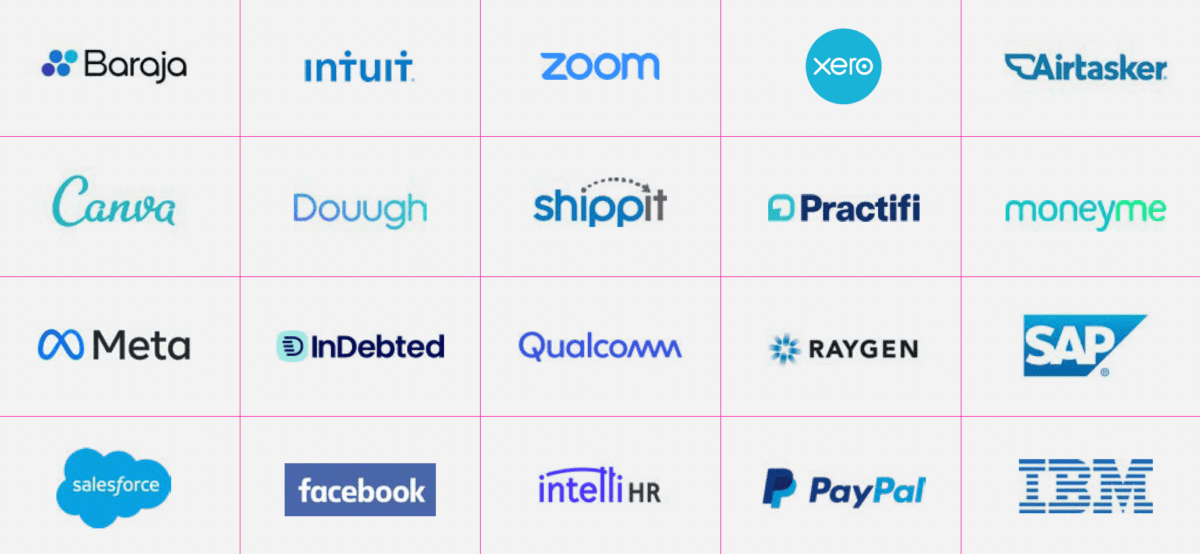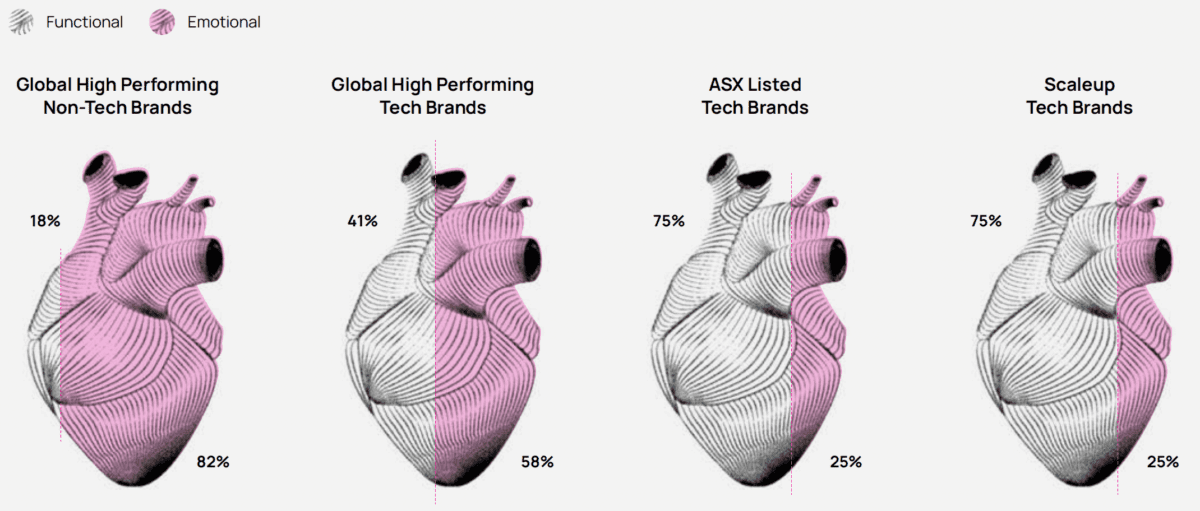
Branding, it’s a feeling
Australia is known for brands that connect with consumers on an emotional level; think Qantas (tearful reunions facilitated by the Flying Kangaroo) Tourism Australia (humour with a beautiful backdrop) even the NRMA (fear that is allayed with a helping hand).
The Australian tech-industry, by contrast, employs function-based branding – that is telling the consumer what the product does rather than its consumer benefit or experience.
Does it matter – do emotions come into play when selling tech – and if so, by how much?
Branding, oh what a feeling!
With the tech industry playing a critical role in Australia’s economic future, together with Hotwire, I researched the branding and marketing communication approaches adopted by tech-brands: is emotional connection important for tech brands, and if so – what brand attributes will enhance consumer emotional connection?
Tech v non-tech brands: different approaches
Under consideration was the brand design and marketing communication approach adopted by existing brands across four key categories: Australian scale-up tech brands, ASX listed tech brands, Global tech brands and Global non-tech brands.

It was immediately apparent that scale-up tech and ASX listed tech place product function at the forefront of their brand and communication strategies. From their descriptive brand names (Shippit) and brand slogans (“Shipping made simple”) to their use of performance metric-based (“with over 2000 orders a month”) and puffery (“Australia’s leading”) in marketing communications.
There was limited attention given to the human side of the brand, and what benefits consumers will receive from engaging with the brand. For example, rather than stating “saving 40 hours a week”, consider what a customer could do with this extra time, what non-functional benefits may be gained.
Global tech on the other hand included emotional elements, moving beyond performance metrics and puffery claims, and instead depicting human moments (e.g., product in use), and presenting the key benefits of the brand (e.g., Accenture: “From customer centricity, to life centricity”; UPS: “Reach Peak Happiness”).

Testing the tech connection
To test the importance of emotional connection, and brand design factors that enhance emotional connection we created a fictitious tech brand – MyTab/Tabstr – positioned as a ‘buy now, pay later’ offering. Key brand elements were manipulated including, brand name (functional vs novel), brand slogan (functional vs emotional), brand logo colour (red, green, blue) and brand logo shape (angular vs curved). Over 1,500 consumers were recruited via a Leading-Edge panel to evaluate the fictitious brand.



Participants were shown one version of the fictitious brand in amongst eight existing scale-up tech brands. Next, participants were asked to complete a brand recall task followed by an evaluation of brand attributes (e.g., innovative, playful, trustworthy). Participants were also indicated their emotional connection to the fictitious brand, and their intention to find out more about the fictitious brand.
Creating an emotional connection increased consumers intention to find out more about a tech brand by 20%. Consumers connected more with brands when they adopted emotional, rather than functional slogans, using curved versus logos or through the inclusion of green within a logo.
Rather than telling potential consumers what your product does, Tech brands should look for opportunities to connect emotionally with their consumers. Whether this is through their brand design, or through taking guidance from high-performing brands, ditch performance metrics and focus on humans, benefits, and emotion when communicating with potential customers.
The research for Dr Brennan’s study was supported by funding from Hotwire Australia.
Image: Andreas Kruck
Stacey is an Associate Professor of Marketing and Head of the Marketing Discipline at the University of Sydney Business School. Her research interests include include the role of psycholinguistic theory in advertising and branding and spokesperson-based effects and message development in advertising.
Share
We believe in open and honest access to knowledge. We use a Creative Commons Attribution NoDerivatives licence for our articles and podcasts, so you can republish them for free, online or in print.







